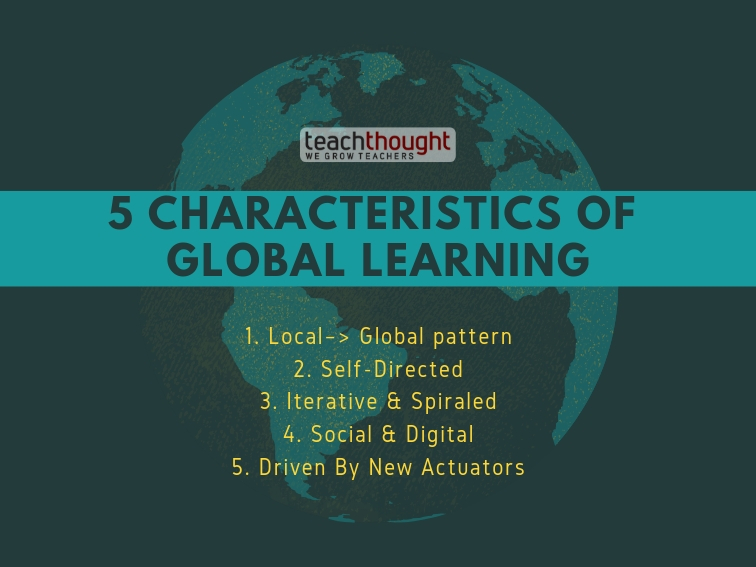
5 Characteristics Of Global Learning
by Terry Heick
Characteristics Of Global Learning: An increasingly globalized society is putting pressure on education to “globalize.” We’ve talked about the definition of global learning before.
This quick post is more about the characteristics of that kind of approach to learning. As globalization becomes more and more inevitable, understanding where we’re drifting might help us make adjustments as we go, yes? The characteristics are numerous and we could almost start anywhere, but five broad characteristics appear below.
1. Local–> Global pattern
When learning is first personal, and local, it has the ability for immediacy, authenticity, and responsiveness not available when it seeks to be immediately “global.”
A student connecting with an international peer set in school-to-school collaboration, or reaching out to help solve global challenges must first employ self-knowledge–see themselves as thinkers and learners and agents of both change and collaboration, and this self-knowledge focus is always, of course, entirely “local.”
The learning process may also, at times, have to be first global then local, but the critical role of an authentic local context remains.
2. Self-Directed
While obviously students can’t be handed a broadband internet signal, an iPad, and be told to “go play” with global peer sets, self-directed learning is becoming increasingly obvious in light of radically improved data access of this information age. This makes self-directed learning paramount to extracting the most out of this newfound scale.
3. Iterative & Spiraled
Formal academic learning is often tightly sequenced, aligned, packaged, and tightly bound.
This all becomes less accessible–though not impossible–as the shift to global learning is made due to increased number of collaborators, increasingly complex technology, and the nature of self-directed learning in general. This makes learning that is iterative and spiraled more natural than a cover-and-move-on approach.
4. Social & Digital
Global learning is very obviously social; it is global after all. This makes the use of digital technology, including social media like twitter, YouTube, pinterest and even upstarts like Vine, fundamental tools in the process.
Learning is inherently social, and in the globalization of it–whether by process (collaboration) or product (creating a product or service that has global application)–logical. The use of education technology to support that process then is one of its most important characteristics.
5. Driven By New Actuators
Globalization is about interdependence and increased consciousness.
This can happen through technology or in person, quickly or gradually–less about form and process, and more about scale and tone. This makes powerful new actuators, including game-based learning, mobile learning, blended learning, and challenge-based learning, all the more seamless.
